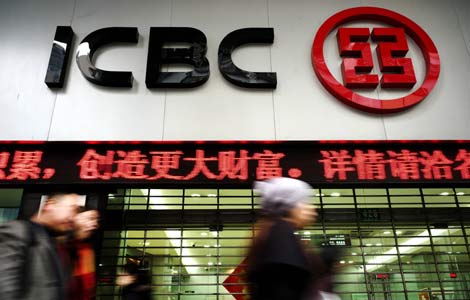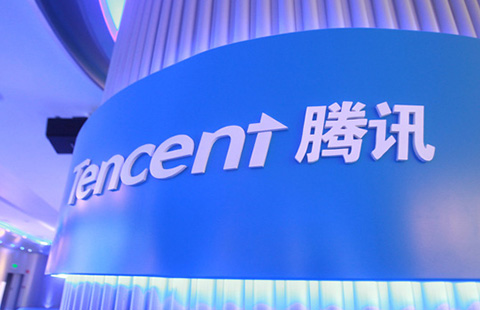Benchmark interest rates set to fall
By Wang Xiaotian (China Daily) Updated: 2012-07-04 09:02
An Industrial and Commercial Bank of China Ltd branch in Shanghai. Benchmark interest rates might continue to fall in the coming months but large-scale cuts can be ruled out, said the China Banking Association on Tuesday in a report on the development of the Chinese banking industry. [Photo / Agencies]

New yuan lending for the year likely to reach 8.5 trillion yuan: Report
China's benchmark interest rates may continue to fall in the coming months but large-scale cuts can be ruled out, the China Banking Association said on Tuesday in a report on the development of the Chinese banking industry.
"From the end of 2010 to the first half of 2011, the central bank was very cautious when increasing the rates because of the capital inflow pressure, and negative real interest rates lasted for a long time. Therefore, in the current circumstances, it's impractical to cut the rates quickly or by a large extent," it said.
In addition, although inflation is expected to remain somewhere between 2.7 and 3.3 percent, it will probably start increasing again in the fourth quarter, which will lessen the likelihood of a more aggressive loosening of monetary policy, said the association, which has close ties with the China Banking Regulatory Commission.
It said corporate financing costs have already been declining as market interest rates fall.
"And the credit environment will continue to become more relaxed, as new yuan lending throughout the year is likely to reach 8 to 8.5 trillion yuan ($1.3 trillion)," it said, forecasting that the reserve requirement ratio for commercial lenders will be cut a further one to three times, each time by 50 basis points.
But banks' profits will show "obvious" declines this year as economic growth slows, credit demand softens and net interest margins narrow, said the association.
China's central bank cut interest rates in June for the first time since 2008 to shore up an economy that is losing steam. It has lowered reserve requirements for banks on three occasions since the fourth quarter of last year to improve market liquidity.
China's economic growth slowed to 8.1 percent in the first quarter, the weakest in nearly three years. The slowdown will continue as analysts expect GDP growth to decline to around 7.5 percent in the second quarter.
The official purchasing managers' index dipped to 50.2 in June from 50.4 in May, and nine out of the 11 sub-indices indicate contraction in manufacturing activities.
Zhang Zhiwei, chief China economist at Nomura Holdings Inc, said he expected further policy easing, including a reserve requirement ratio cut in July, to help the economy rebound in the third quarter.
The banking association warned that commercial banks will face greater liquidity risks throughout this year as deposit tension increases and the risks of asset-liability maturity mismatch rise, under current policy circumstances.
And the government's efforts to liberalize interest rates and the yuan exchange rate will further jeopardize liquidity among lenders, said Lian Ping, chief economist at Bank of Communications Co Ltd.
The report suggested the process of interest rate liberalization should not proceed hastily, and financial sector deregulation should not go forward with a "big bang" approach.
"In order to avoid vicious competition among banks, the authorities should give financial institutions sufficient buffer time to adjust their balance and income structure, and to gradually establish a pricing and risk management mechanism."
It said the upper and lower limits of benchmark interest rates will remain basically stable for a while as the government needs to observe the aftereffects of its allowing deposit rates to exceed the benchmark rates for the first time in June.
The China Banking Regulatory Commission has remarked on liquidity risks among lenders since the beginning of the year, and will publish standards for liquidity indicators within this year, according to Yan Qingmin, assistant chairman of the commission.
It will apply new regulatory parameters, such as the liquidity coverage ratio, which sets the standards on highly liquid assets held by banks to meet short-term obligations, and the net stable funding ratio, which measures medium- and long-term funding of banks' assets, the commission said earlier.
wangxiaotian@chinadaily.com.cn
- Chinese tech startups seek dream 'from zero to hero'
- China's manufacuring PMI rises to 49.8 in Sept
- Nearly 2 million Chinese expected to visit Thailand in Q4
- China eyes huge solar-thermal power project
- Chinese company becomes major shareholder of American WDC
- Self-drive holidaymakers spend more
- Global travel becoming the 'normal' for more families
- Minimum down payment lowered to boost property sector
















